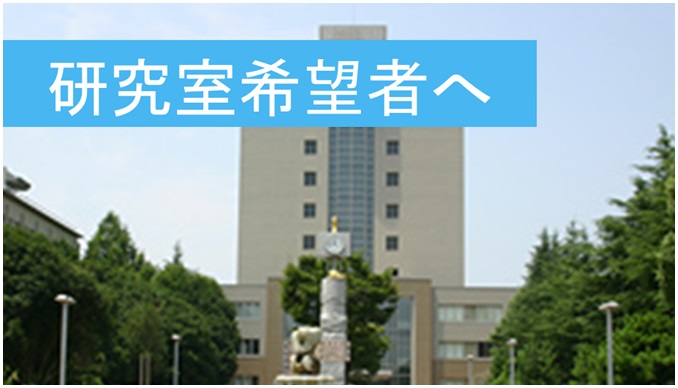High Temperature Gas Dynamics and Laser Diagnostics Group
Department of Mechanical Engineering, Shizuoka University / 静岡大学工学部機械工学科 松井研究室
Research研究紹介
Laser Sustained Plasma and its Application
1) Generation of Laser Sustained Plasma by High Power Diode Laser
Laser-sustained plasma (LSP) is a promising method for stationary thermal
plasma generation, which has advantages of clean flows without extremely
low contamination, availability of active gases and higher pressure operation
than atmosphere. However, the LSP has hardly been applied to industries
because a kilowatt class high-power laser for LSP generation was formerly
limited to CO2 laser, which is high initial and running cost, difficult
maintenance due to the gas laser, low wall-plug efficiency (10 %), large
size, a non-visible beam, and toxic non-clear Zn-Se optics due to its infrared
wavelength. A diode laser has advantages of energy coefficient more than
50 % and installation cost. In this study, generating conditions of LSP
by the diode laser is exmined.
高出力半導体レーザーを用いたレーザー維持プラズマの生成
レーザー維持プラズマは大気圧以上で非接触に生成できるプラズマであり高エンタルピー風洞、ロケット推進など様々な分野での応用が期待されています。一方で、これまではレーザー光源としてCO2レーザーが用いられてきましたが、電気からレーザーへのエネルギー変換効率が10%程度と低いのが課題となっています。半導体レーザーは変換効率が50%以上と高く、高効率なレーザープラズマの光源として有望ではありますが、CO2レーザーに比べ波長が一桁小さく(1μm弱)、プラズマがレーザー光を吸収する過程を逆制動放射のみと仮定すると吸収率が二桁近く小さいといったデメリットがあります。。本研究では1kW級半導体レーザーを用いてレーザー維持プラズマの生成条件の検証とその高効率化を目的としています。

2) Launch System by Laser Propulsion
Today's launch vehicles produce energy by burning a propellant, which
accounts for nearly 90% of the total weight. Laser propulsion is a space
transportation system that obtains thrust with a laser beam transmitted
from the ground as an energy source. By separating the energy source from
the rocket, a significant cost reduction of the rocket can be expected.
In addition to the feasibility study by numerical calculation, an experimental
demonstrative test would be scheduled.
レーザー推進を用いた軌道投入
現在の打ち上げロケットは推進剤を燃焼させることでエネルギーを生み出しており、全重量の90%近くを推進剤が占めています。レーザー推進は地上基地よりレーザーを照射し、大気または推進剤をプラズマ化して噴射することです力を得ます。エネルギー源をロケットと分離することでロケットの大幅なコスト削減化が期待できます。本テーマは名古屋大学森浩一准教授を中心とした産学連携共同研究であり、実際の打上デモを目指しています。

3) Alumina Reduction by Laser Sustained Plasma for Energy Cycling System
Aluminum can store energy as a chemical potential which is a few orders
of magnitude higher than that of Li-ion batteries or hydrogen, and almost
equals that of fossil fuels. This allows storing the renewable energy in
aluminum on a suitable site and transporting it to a consuming region,
where electricity is extracted by a thermal power plant. A key technology
in the cycling process is the reduction of alumina. In this study, we employed
LSP to reduce alumina by thermal dissociation, which is a zero-emission
method different from the conventional Hall-Heroult process.
エネルギーサイクルシステムのためのレーザー維持プラズマを用いたアルミナ還元
アルミニウムは酸化アルミニウム(アルミナ)を還元することで生成されますが、電気の缶詰と呼ばれるくらい大量の電力を必要とします。このことは逆に電気エネルギーを高密度に貯蔵できることを意味しているので将来の大容量蓄電材となる可能性を秘めています。現在はアルミナの還元にはホール・エルー法が使われていますがこの手法では大量の二酸化炭素が発生する問題があるので、レーザープラズマを利用することでゼロ・エミッションのアルミア還元システムの開発を目指しています。

Development of Laser Diagnostics Methods for Flow Evaluation
We have been developing following non-intrusive diagnostics methods based on laser spectroscopy to characterize flow and plasma properties.
-Wavelength modulation and integrated cavity output spectroscopy for AO
density measurement
-High speed wavelength modulation spectroscopy for temperature measurement
-Laser induced fluorescence for electric field measurement
-Mach-Zehnder interferometer for electron density measurement
気流評価のためのレーザー分光法の開発
プラズマを生成、利用する上でその状態を正確に把握することは非常に重要です。本研究室では非接触にプラズマ状態を計測できる様々なレーザー分光法の開発を行っています。
・WM-ICOSによる超高感度原子数密度測定
・WMSを用いた高感度温度測定
・LIFを用いた電場測定
・マッハツェンダ−を用いた高速電子数密度測定

Generation Process of Sono-luminescence
Sonoluminescence (SL) is a
light emission phenomenon that occurs when bubble nuclei in a liquid expand and
crush in synchronization with applied ultrasonic waves. It is reported that SL is a plasma state of several thousand
atmospheres and tens of thousands of degrees. Although SL can create ultra-high
pressure and temperature conditions with only a few hundred watts, its light
emission time is as short as 1 ns (= 10 -9 s). So its physical
process is not enough to be known. In this study, we aim to elucidate SL phenomena
with ps-order (= 10-12 s) time resolution by using laser
spectroscopy and streak camera.
ソノルミネッセンスの発光現象の解明
ソノルミネッセンス(SL)は超音波を共振させることで液体中の気泡核が膨張、圧壊する際に生じる発光現象であり、数千気圧、数万度のプラズマ状態であることが報告されています。SLはわずか数百Wで超高圧・超高温状態を創りだすことができますが、発光時間は1ns(=10-9s)であるため、その物理過程はまだよくわかっていません。本研究ではレーザー分光法とストリークカメラを併用することでpsオーダー(=10-12s)の時間分解能でSL現象を解明することを目的としています。

Cooperative Graduate School with JAXA (連携大学院)
Shizuoka University has a cooperative graduate school with JAXA. Our group
collabrate following two groups; Dr. Okawa at Chofu Aerospace Center (CAC)
and Prof. K. Fujita, Prof. I. Funaki and Associate Prof. K. Yamada at Institute
of Space and Astronautical Science (ISAS)
静岡大学はJAXAと連携大学院協定を結んでおり、本研究室からは調布航空宇宙センター研究開発部門第二研究ユニット大川グループ、宇宙科学研究所(相模原)藤田和央教授、船木一幸教授、山田和彦准教授に学生を派遣して共同研究を行っています。現在行っている主なテーマは以下になります。
1) Evaluation of pre-cursor Ionization in Shock Tube Flows (CAC/JAXA)
A sample return mission from
Jupiter Trojans currently is under consideration in JAXA. In this mission, the reentry
speed to the atmosphere is predicted to reach as high as 15 km/s. The purpose
of this research is to elucidate the shock wave structure and predict the
radiant heating rate using a shock tube.
衝撃波管を用いた衝撃波前方プリカーサー現象の解明 (調布航空宇宙センター/JAXA)
現在構想中の木星トロヤ群からのサンプルリターンミッションでは地球帰還時の大気圏突入時の速度が過去最速の14.5km/sに達すると予測されています。本研究では衝撃波管を用いて衝撃波構造の解明と輻射加熱率の予想を目的としています。
2) Evaluation of Expansion Tube Flows by Laser Diagnostics (ISAS/JAXA)
An expansion tub is a unique device to produce high speed flows without stagnation conditions. Then, the flow is much closer to the actual one than those in shock tunnels and plasma wind tunnel. However, the operation time is as short as μs and the flow characteristics have not been sufficiently understood. Our group aims to establish laser diagnostics methods using an expansion tube at ISAS/JAXA and to characterize HEK-X flow conditions at the Kakuda Space Center.
レーザー分光法による膨張波管気流評価 (宇宙科学研究所/JAXA)
膨張波管はプラズマ風洞や衝撃風洞に比べ低解離度で実際の再突入環境に近い気流を生成する装置ですが作動時間がμsオーダーと極めて短いため気流特性が未だ十分に把握されていません。我々のグループではJAXA宇宙科学研究所の膨張波管を用いてレーザー診断法を確立し、角田宇宙センターにある世界最大規模の膨張波管HEK-Xの気流特性を解明することを目的としています。

3) Hall Thruster (CAS, ISAS/JAXA)
Hall thrusters are currently widely used as thrusters for satellites and
space probes because they have an order of magnitude greater thrust density
than that of ion engines. JAXA is developing carbon dioxide propellants
to replace expensive xenon propellants and high-power cathodes for future
large Hall thrusters.
ホールスラスタの開発 (調布宇宙センター、宇宙科学研究所/JAXA)
ホールスラスタはイオンエンジン比べ一桁以上推力密度が大きく、現在衛星、探査機用スラスタとして幅広く使われています。JAXAでは高価なキセノン推進剤に代わる二酸化炭素を推進剤としたホールスラスタや、将来の大型ホールスラスタ用の大電力カソードの開発を行っています。

100W class Hall thruster

